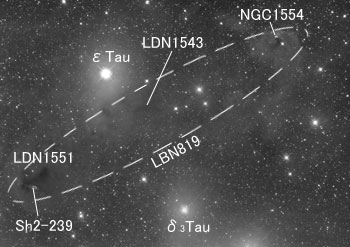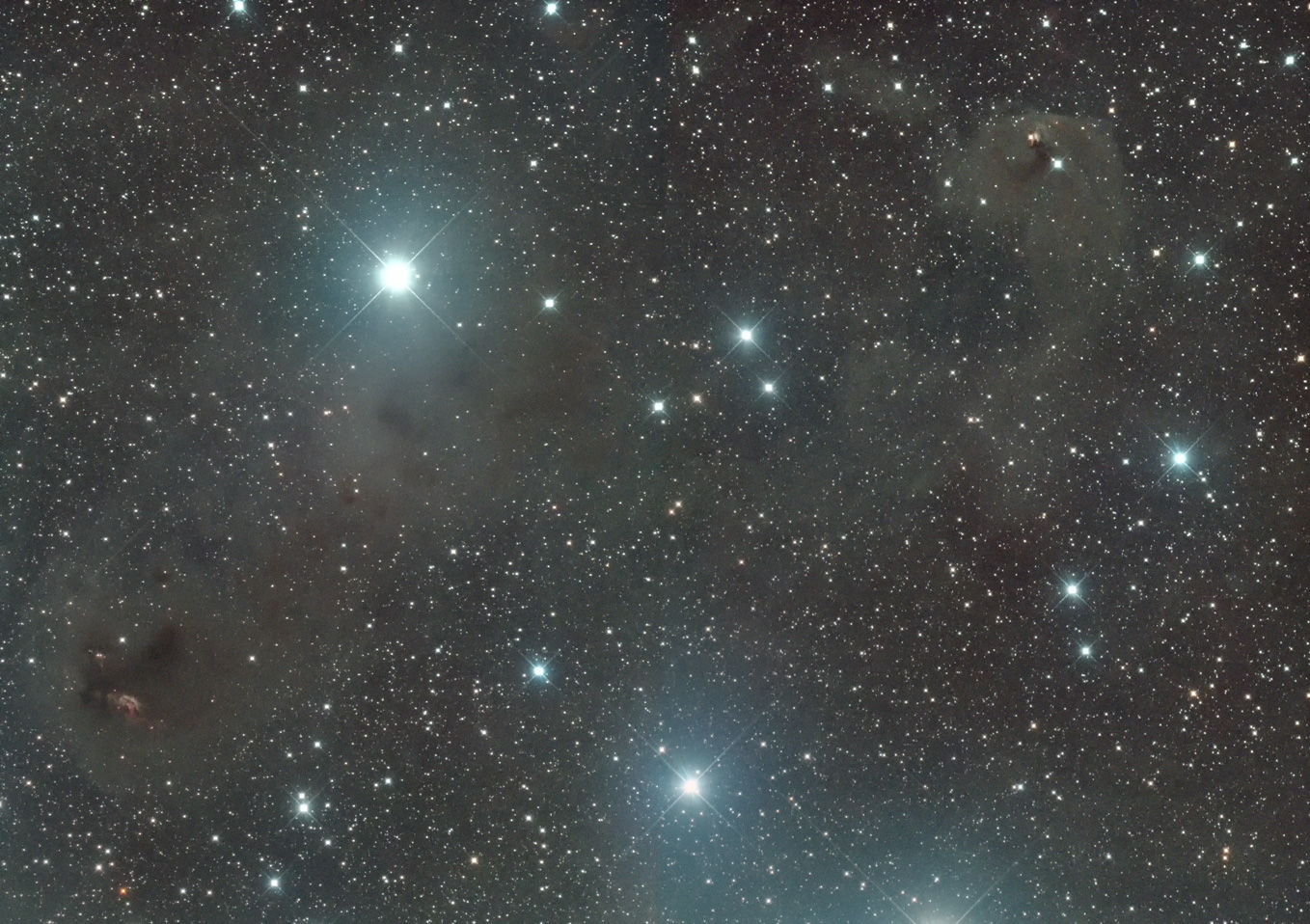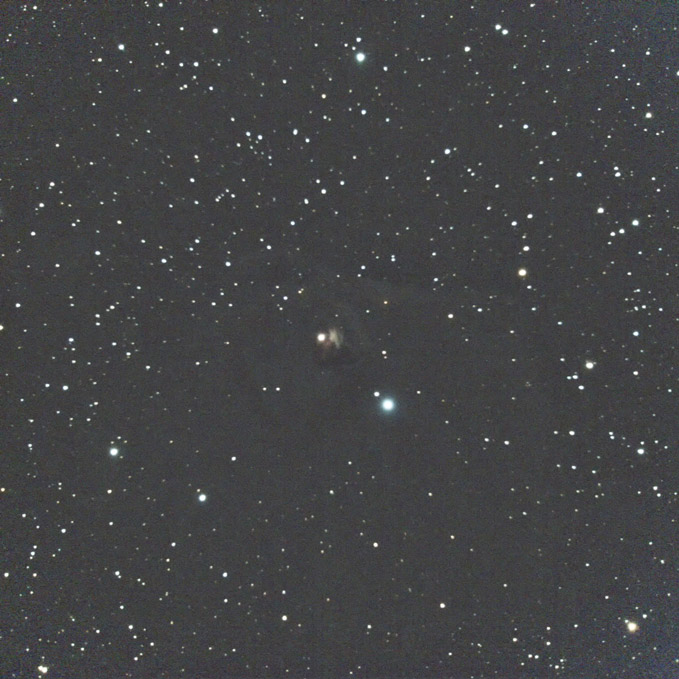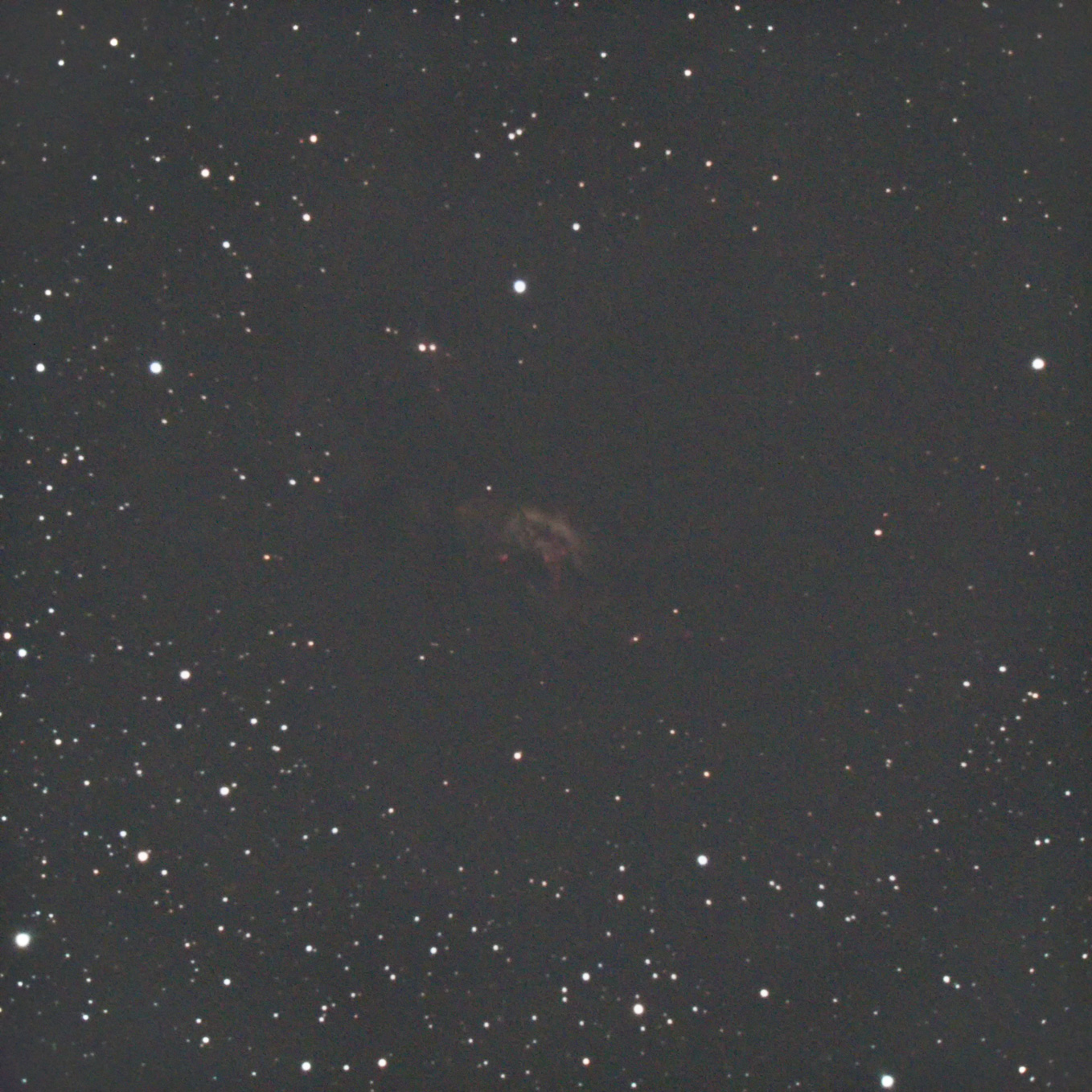Deep Sky Object in Winter
Around Hind's variable nebula to Sh2-239 (Emission Nebulae in Taurus)
Click on image to enlarge
| Date & Time: | Dec 17 2018, from 23:09 to 25:13 JST(+0900) |
| Mosaic of 2 flames of 8min.×8shots |
| Optical: | TAKAHASHI 16cm(6.3") epsilon (f=530mm, F3.3) |
| with LPS-D1 Light-pollution suppression filter |
| Auto-guided with TAKAHASHI JP Equatorial & SBIG STV |
| CMOS Camera: | ZWO ASI2600MC Pro (Cooled temp.: -25°C) |
| Location: | Ooizumi, Hokuto city, Yamanashi pref. |
| Camera Settings: | Recording format...16bit FITS, converted to 16bit TIFF(6248×4176) |
| Device Size...23.5×15.7mm, Gain...100 |
Close-up of NGC1554
| Date & Time: | Dec 8 2018, from 23:04 to 23:49 JST(+0900) |
| Composed 10 shots with 5 minutes exposed |
| Optical: | Meade 25cm(10") Schmidt-Cassegrain with conversion lens (f=1600mm, F6.3) |
| with BaaderPlanetarium Moon&Skyglow filter |
| Auto-guided with Meade LX200 Equatorial & Pictor 201XT |
| Digital Camera: | Nikon D810A |
| Location: | Ooizumi, Hokuto city, Yamanashi pref. |
| Camera Settings: | Recording Format...14bit CCD-RAW, converted to 16bit TIFF(4080×4080) |
| Device Size...20×20mm |
| Sensitivity...ISO4000, White Balance...Daylight |
Click on image to enlarge
Close-up of Sh2-239
| Date & Time: | Nov 19 2023, from 27:59 to 28:47 JST(+0900) |
| Composed 7 shots with 8 minutes exposed |
| Optical: | Meade 25cm(10") Schmidt-Cassegrain with conversion lens (f=1600mm, F6.3) |
| with IDAS LPS-P1 Light-pollution suppression filter |
| Auto-guided with Meade LX200 Equatorial & Lacerta M-GEN |
| Digital Camera: | Nikon D810A |
| Location: | Ooizumi, Hokuto city, Yamanashi pref. |
| Camera Settings: | Recording Format...14bit CCD-RAW, converted to 16bit TIFF(4080×4080) |
| Device Size...20×20mm |
| Sensitivity...ISO4000, White Balance...Daylight |

Objects around Hind's variable nebula to Sh2-239
|
This image captures a 3×2° area in the northern part of the Hyades star cluster in Taurus.
A bright star visible in the upper left of the photo is ε Tauri. In this region, a portion of the "Taurus Molecular Cloud" is distributed.
Although it appears to overlap with the Hyades, it is actually more than three times farther away.
Stretching from the upper right to the lower left of the field of view, a molecular cloud extends over a length of 2.5 degrees in a belt-like fashion, identified by the designation LBN819.
Both ends of this molecular cloud have newborn primitive stars known as "T Tauri".
Two small reflection nebulae are visible by reflecting the light of these stars.
Firstly, a small reflection nebula seen at the upper right end is NGC1554. Its span is modest, about 1.5 arcminutes, requiring a large telescope for visual confirmation.
This nebula reflects the light from a T Tauri (HD 284419), 9th magnitude star visible just to the east.
Due to variations in the brightness of this evolving star, the nebula is also known by the alternate name "Hind's variable nebula," named after its discoverer.
Next, an emission nebula visible at the lower left end of LBN819 is Sh2-239.
The surrounding dark nebula LDN1551 (a part of LBN819) is illuminated by the light of a recently born dark T Tauri star.
This dark nebula has a circular shape with an apparent diameter of about 40 arcminutes, and its outer regions emit a faint glow due to the light from surrounding stars.
The brightest part of Sh2-239 is cataloged as HH102, representing an active jet structure of interstellar gas known as the "Herbig-Haro object".
|
| LBN819 / Molecular Cloud, type 6 R |
|---|
| R.A. | 04h 28m 00.0s (2000.0) |
|---|
| Dec. | +18°48' 00" (2000.0) |
|---|
| Apparent Size | 150×20' |
|---|
| Real Size | 20×3 light yrs. |
|---|
| Magnitude | - |
|---|
| Distance | 460 light yrs. |
|---|
| Other IDs | - |
|---|
|
| NGC1554 / Reflection Nebula, type 2 R |
|---|
| R.A. | 04h 21m 57.0s (2000.0) |
|---|
| Dec. | +19°32' 00" (2000.0) |
|---|
| Apparent Size | 1.5' |
|---|
| Real Size | 0.2 light yrs. |
|---|
| Magnitude | - |
|---|
| Distance | 460 light yrs. |
|---|
| Other IDs | SH2 -238, LBN 817 |
|---|
|
| Sh2-239 / Emission Nebula, type 3 E |
|---|
| R.A. | 04h 31m 21.0s (2000.0) |
|---|
| Dec. | +18°07' 00" (2000.0) |
|---|
| Apparent Size | 5.3×2.5' |
|---|
| Real Size | 0.7 light yrs. |
|---|
| Magnitude | - |
|---|
| Distance | 460 light yrs. |
|---|
| Other IDs | LBN821 |
|---|
|



